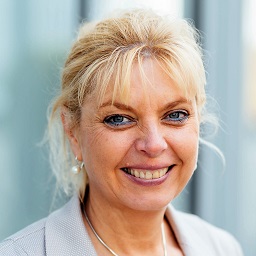Superpower crisis resilience
Expand the table of contents
Mediation: Resolving conflicts and promoting understanding
Emotional intelligence and decision-making ability
How to number 1: How do people acquire new skills?
Why do some people cope better with crises than others?
How to to number 2: Can resilience be learned?
How to number 3: And how do you lead resiliently?
We can handle crises!
The last few years have shown us – at what feels like an ever-increasing pace – how crucial it is to be able to deal with uncertainty and change. Whether it’s economic turbulence, social upheaval or personal challenges, the ability to overcome crises has become a key skill in today’s world. But what exactly is this ‘superpower crisis resilience’, and how can we strengthen it? Do we perhaps all already have the skills within us, or are we actually completely unaware of what the future holds? Without giving anything away, I believe it is a mixture of both.
And as is so often the case, it comes down to finding the right balance. So let’s approach this equilibrium with what we know…
Labour law: Combining flexibility and legal certainty
One important skill that arises from labour law is reconciling flexibility and legal certainty. Companies that proactively shape legal parameters – for example, through agile company agreements or clear regulations on working hours and location – create stability in uncertain times. This stability gives employees orientation and security, while at the same time leaving enough leeway for adjustments to crisis situations.
Labour law is often accused of inflexibility. My response to this is that legal certainty reduces insecurity and conflict. We need guidelines within which we feel protected. The hollow call for us all to ‘get out of our comfort zones’ remains an empty phrase until we give it a direction. Simply being different is not a way forward. The protective shield of labour law strengthens the ability of companies and teams to respond to change quickly and effectively without resorting to blind actionism.
Mediation: Resolving conflicts and promoting understanding
I love this still underrated method of conflict resolution: mediation trains the ability to approach conflicts in a solution-oriented way, taking into account the interests of all parties involved. In times of crisis, different perspectives and tensions often arise that, if unresolved, can paralyse entire teams or organisations. Mediators promote open communication, create understanding and develop sustainable solutions. The parties involved can often save face much more easily than in many other conflict resolution processes. And when we look at the major and minor crises in the world, it is often (often only) about personal sensitivities.
The ability to keep conflicts from escalating and to instead steer them in productive directions strengthens cooperation and makes it possible to remain capable of acting even in difficult times. Teams that communicate well are more resilient and innovative.
Emotional intelligence and decision-making ability
Artificial intelligence is the supposed technical superpower – and yet, in parallel, another form of intelligence is (also) becoming increasingly valuable in the world of work: the power of emotions. Executive coaching teaches how to lead teams through uncertain times – with clarity, empathy and determination. Emotional intelligence helps to recognise and address the needs of employees, while strong decision-making ability provides stability.
In crises, teams look to their leaders for support. A leader who communicates authentically, acts empathetically and makes clear decisions provides their team with orientation and creates an environment in which resilience can grow.
How to number 1: How do people acquire new skills?
So if we know that there are ‘superpowers’ – why don’t we just learn them? Why isn’t ‘future skills’ a school subject?
Well, the acquisition of skills involves more than just accumulating knowledge. It requires actively engaging with new demands, adapting our thinking and – often most difficult of all – ‘unlearning’ old patterns that are no longer effective. In a world that is changing rapidly, this discontinuous learning process is crucial.
‘Unlearning’ means letting go of existing beliefs, routines or thought patterns that used to be helpful but are hindering in new contexts. It makes room for fresh perspectives and encourages the courage to try new approaches. Without this step, we often remain trapped in old habits and run the risk of falling behind in a changing world.
Knowledge accumulation is passive. It involves storing information – such as reading a book or learning facts. This knowledge is static and only becomes valuable when it is put into the right context and applied.
Innovative skills acquisition, on the other hand, is active. It goes beyond knowledge and integrates it into real, dynamic challenges. In the process, new skills are trained that enable flexible responses to complex situations.
Innovative skills acquisition also means applying knowledge in unfamiliar contexts – and repeatedly taking setbacks in stride. It is this iterative process of trial and error, reflection and adaptation that leads to the development of real skills.
This discontinuous learning (something completely different from the continuous education system) challenges us to leave rigid development paths and to continuously engage with change. It requires not only curiosity, but also courage and the ability to accept failure. This makes it possible not only to expand knowledge, but also to develop the skills that really count in a changing world: creativity, adaptability and resilience.
I am not trying to abolish or demonise our traditional education system. Here, too, it is the balance between knowledge and application, between learning and unlearning, between facts and intuition that is forward-looking.
Why do some people cope better with crises than others?
How we deal with crises varies greatly from person to person. Some seem to see crises as a challenge, while others feel overwhelmed by uncertainty and change. The reasons for this lie in a complex mix of internal and external factors:
- Internal factors: personal resources and attitude
Resilience is the ability to pick yourself up again despite adverse circumstances. People with high resilience have personal resources such as self-efficacy, optimism and flexibility that help them to see crises as temporary and manageable. Those who are good at perceiving and regulating their own emotions and those of others are able to remain calm and act in a solution-oriented manner despite stress and uncertainty. People who have successfully overcome crises in the past draw on these experiences and develop a ‘can-do’ mindset.
- External factors: environment and support
People who are embedded in a supportive environment – be it through family, friends or colleagues – usually have more resources to deal with crises. Support can provide emotional strength and practical help in finding solutions. In the world of work, managers and corporate cultures play a central role. Those who work in an environment that tolerates mistakes and promotes open exchange feel more secure in crisis situations.
- The ‘unlearning’ factor: dealing with change
A crucial role is played by the willingness to question habits and thought patterns and to embrace new things. People who are willing to discard old routines and learn new approaches can adapt better. Unlearning is a central aspect of resilience here: those who rigidly cling to old patterns often experience change as a threat.
The differences in how we deal with crises result from the interplay of personality, experiences, support and mindsets. People who are able to activate their internal and external resources, change their perspective and remain flexible can cope better with crises. However, it is important to emphasise that resilience is not a static trait – it can be strengthened through training and reflection.
How to number 2: Can resilience be learned?
The term resilience has already been mentioned several times – but what exactly is resilience and, more importantly, can we learn resilience?
Resilience describes the ability to remain flexible, capable and mentally stable in difficult situations. It is not about simply ‘getting over’ crises, but rather overcoming them and learning from them. Resilience is often described as a protective shield that helps people to deal with uncertainty, stress and change without suffering long-term damage.
Resilience encompasses several dimensions:
- Emotional stability: the ability to keep a clear head even in stressful situations.
- Cognitive flexibility: a change of perspective to see challenges as opportunities.
- Social support: networks that offer security and help.
- Self-efficacy: the confidence to be able to actively influence and master difficult situations.
The good news is that resilience is not an innate trait, but a dynamic skill that can be developed and strengthened. It is a process that requires conscious reflection, practice and new experiences. What are the ingredients for this?
- The first step to resilience is the ability to perceive one’s own thoughts, emotions and reactions. Mindfulness techniques such as meditation or journaling help to strengthen inner stability and consciously regulate stress.
- Resilience requires optimism and the ability to see challenges as opportunities for growth. Those who change their perspective and focus on solvable aspects remain capable of action.
- A key factor in resilience is the ability to see mistakes as learning opportunities. Resilient people do not view setbacks as failures, but as opportunities for further development.
- Building and maintaining relationships is essential for resilience. Support from others provides emotional stability and often practical solutions.
- Targeted exercises such as conflict management, communication training or stress management strengthen resilience. Managers, for example, benefit from coaching that focuses on these skills.
How to number 3: And how do you lead resiliently?
Crises create uncertainty. Managers play a key role in strengthening the resilience of teams and organisations. At the same time, they themselves are often under immense pressure and run the risk of burning out in crisis situations. Striking the right balance between responsibility for others and self-protection is crucial – yet another balance that we have to find.
What I have to offer: Managers can reduce pressure and uncertainty by communicating clearly, honestly and empathetically. Regular updates, transparent decisions and a willingness to address concerns create trust and orientation.
Resilience arises where people are empowered to act independently. More than ever, managers need to create the space for employees to take responsibility. This not only strengthens the team, but also takes pressure off the manager themselves. Hybrid work settings, i.e. a sensible, well-founded (and accepted balanced) mix of analogue on-site work and digital collaboration, support freedom while also providing a framework. A supportive corporate culture is an important factor for resilience. Managers can take targeted measures to strengthen cohesion, such as team development, appreciation and joint reflection. Resilience can be learned – also in a team. Training in stress management, conflict management and problem-solving strategies help employees to better deal with stress.
The counterweight in the balance: Managers are often under pressure to be available and productive at all times. But resilience requires breaks. Setting boundaries – including in relation to your own demands – is essential to maintaining long-term productivity. Regular self-reflection helps to recognise your own stressors and limits. Coaching or supervision provide valuable support in analysing and overcoming challenges. Managers who talk openly about challenges and share their own resilience strategies send a strong signal. They show that resilience is not a sign of weakness, but of strength and responsibility. Regular exercise, hobbies or sharing with trusted people are not luxury goods, but important resources for building resilience.
Managers who promote resilience create an environment that makes teams strong and capable of action – even in uncertain times. At the same time, consciously dealing with resilience protects them from overload. This not only makes the world of work, but also leadership itself, fit for the future. It’s a question of balance, over and over again. As paradoxical as it sounds, balance comes from movement!
We can handle crises!
Amidst numerous negative headlines about crises, there are also many positive examples that show how clever leadership and resilience can help organisations and people through difficult times.
The new year has just begun, and if the last few years have shown us anything, it is that crises are part of life – and they are an opportunity. Whether it’s the transition to hybrid work, the energy crisis or the shortage of skilled workers, one thing remains crucial: people and leaders who act with a clear head, flexibility and foresight.
Crisis resilience is not an innate trait. It is a skill that anyone can – and must – develop! In a world that is constantly changing, our own flexibility is what matters. It depends on the balance between the learned and the new, between composure and movement, between selfishness as healthy self-protection and altruism as social responsibility.
Resilience means not only surviving uncertainties well, but also emerging from them stronger.
From what we have learnt
- Labour law: setting guidelines within which freedom is practised
- Mediation: observing rules of the game that allow people to save face
- Coaching: demanding and accepting mutual support
is where the new emerges. Why not make crisis resilience our guiding principle? Let’s build skills that help us remain capable of acting in difficult times. Let’s focus on solutions that work not just for the moment, but for the future. Because resilience is not just a protective shield – it’s a motor that propels us forward.
2025 can be the year in which we not only make ourselves crisis-proof, but also future-proof. It’s all about the mix – and the balance!
Notes:
Further information on actively shaping the world of work can be found on Britta Redmann’s German website.
If you like the post or want to discuss it, feel free to share it with your network.
Britta Redmann has published more articles in the t2informatik Blog, inlcuding

Britta Redmann
Britta Redmann is an independent lawyer, mediator and coach and is responsible for HR & Corporate Development at a software manufacturer. She is the author of various specialist books. As a human resources manager, she has accompanied, managed and implemented organisational developments in various industries. Her special expertise lies in the development of organizations up to agile and networked forms of cooperation. She transforms and implements modern concepts such as agility, work 4.0 and digitalisation in terms of labour law.
In the t2informatik Blog, we publish articles for people in organisations. For these people, we develop and modernise software. Pragmatic. ✔️ Personal. ✔️ Professional. ✔️ Click here to find out more.


